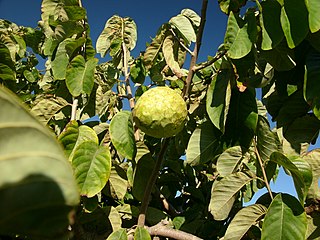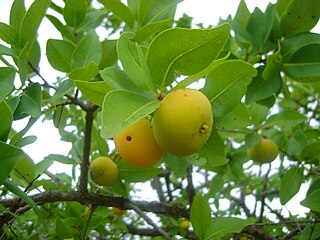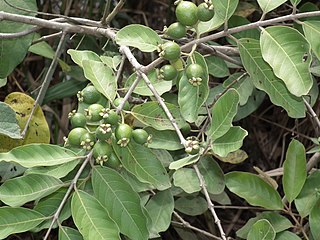
The Fabaceae or Leguminosae, commonly known as the legume, pea, or bean family, are a large and agriculturally important family of flowering plants. It includes trees, shrubs, and perennial or annual herbaceous plants, which are easily recognized by their fruit (legume) and their compound, stipulate leaves. The family is widely distributed, and is the third-largest land plant family in number of species, behind only the Orchidaceae and Asteraceae, with about 765 genera and nearly 20,000 known species.

Cercis is a genus of about 10 species in the subfamily Cercidoideae of the pea family Fabaceae. It contains small deciduous trees or large shrubs commonly known as redbuds in the USA. They are characterised by simple, rounded to heart-shaped leaves and pinkish-red flowers borne in the early spring on bare leafless shoots, on both branches and trunk ("cauliflory"). The genus contains ten species, native to warm temperate regions of North America, southern Europe, western and central Asia, and China.

Enterolobium cyclocarpum, commonly known as conacaste, guanacaste, caro caro, devil's ear tree, monkey-ear tree, or elephant-ear tree, is a species of flowering tree in the family Fabaceae, that is native to tropical regions of the Americas, from central Mexico south to northern Brazil (Roraima) and Venezuela. It is known for its large proportions, expansive, often spherical crown, and curiously shaped seedpods. The abundance of this tree, especially in Guanacaste Province, Costa Rica, where it is prized for the shady relief it provides from the intense sun, coupled with its immensity, have made it a widely recognized species. It is the national tree of Costa Rica.

The cherimoya, also spelled chirimoya and called chirimuya by the Quechua people, is a species of edible fruit-bearing plant in the genus Annona, from the family Annonaceae, which includes the closely related sweetsop and soursop. The plant has long been believed to be native to Ecuador and Peru, with cultivation practised in the Andes and Central America, although a recent hypothesis postulates Central America as the origin instead, because many of the plant's wild relatives occur in this area.

Ficus citrifolia, also known as the shortleaf fig, giant bearded fig, Jagüey, wild banyantree and Wimba tree, is a species of banyan native to southern Florida, the Caribbean, Mexico, Central America, and northern South America south to Paraguay. It is distinguished from the closely related Florida strangler fig mainly by the finer veining in the leaves.

Couroupita guianensis, known by a variety of common names including cannonball tree, is a deciduous tree in the flowering plant family Lecythidaceae. It is native to the tropical forests of Central and South America, and it is cultivated in many other tropical areas throughout the world because of its fragrant flowers and large fruits, which are brownish grey. There are potential medicinal uses for many parts of Couroupita guianensis, and the tree has cultural and religious significance in South and Southeast Asia. In Sri Lanka and India, the cannonball tree has been widely misidentified as the Sal tree, after its introduction to the island by the British in 1881, and has been included as a common item in Buddhist temples as a result.

Solanum lycocarpum, or wolf apple, is common in the Brazilian savanna, the Cerrado ecoregion. The plant is called lobeira or fruta-do-lobo in Portuguese.

Hymenaea is a genus of plants in the legume family Fabaceae. Of the fourteen living species in the genus, all but one are native to the tropics of the Americas, with one additional species on the east coast of Africa. Some authors place the African species in a separate monotypic genus, Trachylobium. In the Neotropics, Hymenaea is distributed through the Caribbean islands, and from southern Mexico to Brazil. Linnaeus named the genus in 1753 in Species Plantarum for Hymenaios, the Greek god of marriage ceremonies. The name is a reference to the paired leaflets.

Dekeyser's nectar bat is a bat species found in Brazil and Bolivia.
Annona coriacea is a fruit tree native to Brazil. Its original habitat includes the ecoregions of Cerrado, Caatinga, and Pantanal. There, it is typically found in scrublands and savannahs, though it is sometimes grown in orchards. Its wood is used in constructions and toys. This plant is cited in Flora Brasiliensis by Carl Friedrich Philipp von Martius.

Attalea speciosa, the babassu, babassu palm, babaçu, or cusi, is a palm native to the Amazon Rainforest region in South America. The babassu palm is the predominant species in the Maranhão Babaçu forests of Maranhão and Piauí states.

Plathymenia reticulata is a species of legume native to much of eastern South America. It is placed in its own genus, Platyhymenia, although other species have previously been recognised in that genus. It grows up to 30 m (98 ft) tall, and has distinctive flattened seed pods. Its wood is rot-resistant, and is widely used as a structural timber.

Dipteryx alata is a large, undomesticated, edible nut-bearing tree from dryish tropical lowlands in central South America belonging to the legume family, Fabaceae, from the Dipterygeae tribe in the Faboideae subfamily. It is a wild species, widespread across the Cerrado savanna in South America. The baru nut seed is a grain legume, growing in popularity in North America as a snack food.

Annona crassiflora, commonly known as marolo, araticum cortiça, araticum do cerrado or bruto, is a flowering plant in the Annonaceae family. The flowers of a marolo look like jellyfish wearing hats, and the fruits are sweet and very rough. It is native to Brazil and Paraguay and the fruit is eaten by native peoples in the Brazilian Cerrado. Although it is considered to have potential for cultivation, it has not been domesticated to date.

Eugenia dysenterica is a tree from the family Myrtaceae, native of the Cerrado, the central savannah region of Brazil. It is locally known by the Portuguese names cagaita or cagaiteira.

Caryocar brasiliense, known as pequi or souari nut, is an edible fruit popular in some areas of Brazil, especially in Centerwestern Brazil.
Anacardium othonianum is a tree native from the tropical savanna (cerrado) region of Brazil, whose fruit is similar to that of the common cashew tree of the Brazilian Northeast. It is locally known by the Tupi-derived name cajuí, and by the Portuguese names caju-de-árvore-do-cerrado, caju-vermelho-de-goiás, cajuzinho-do-cerrado or just cajuzinho.
Hymenaea mexicana is an extinct legume species in the family Fabaceae described from a series of isolated fossil petals, leaflets, and amber. The species is known from a group of Late Oligocene to Early Miocene locations in southern Mexico. It is one of two extinct Hymenaea species placed close to the living species Hymenaea verrucosa and along with Hymenaea allendis, is one of the two extinct species which have been found in Mexican amber.

Parkia pendula is a species of neotropical evergreen tree found throughout Central and South America. It is part of the Parkia genus, a group of flowering plants that are part of the legume family, Fabaceae.

Campomanesia adamantium, commonly known as gabiroba, guavira, or guabiroba do campo, is a short shrub-like plant that grows no taller than 1.5 meters on average It is natively found in the central part of South America, in Paraguay and Brazil. The plant produces small yellow-green edible fruits



















